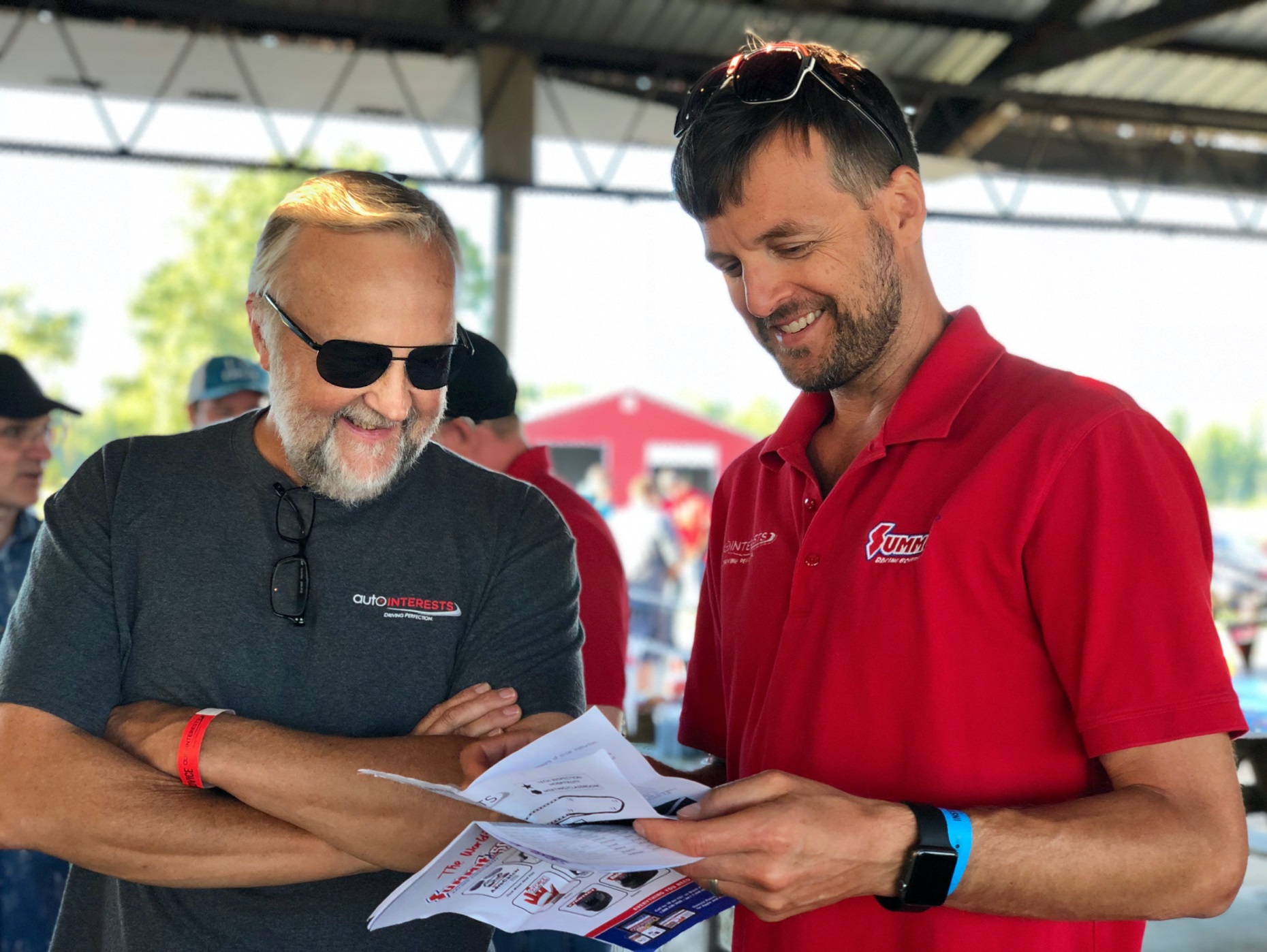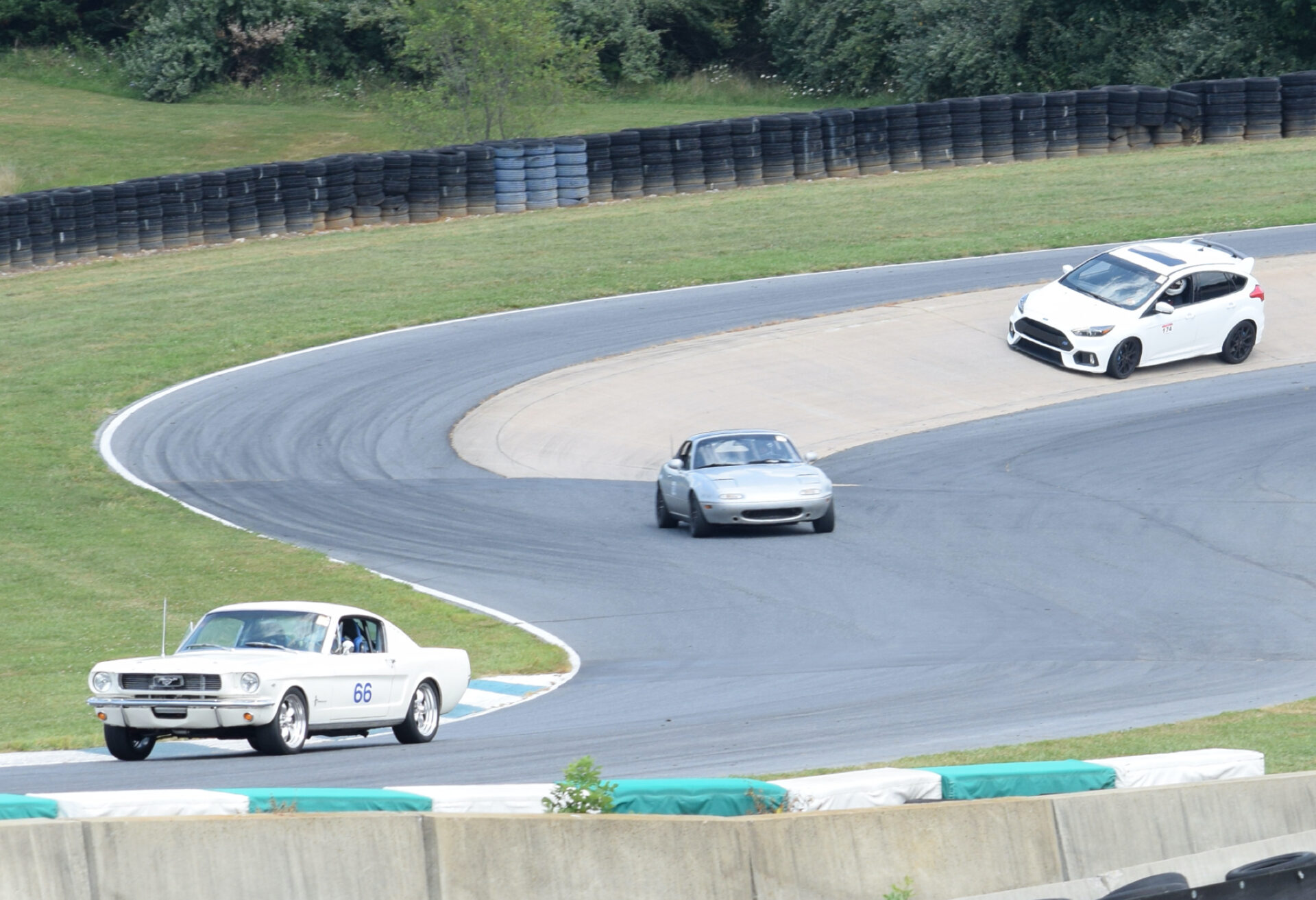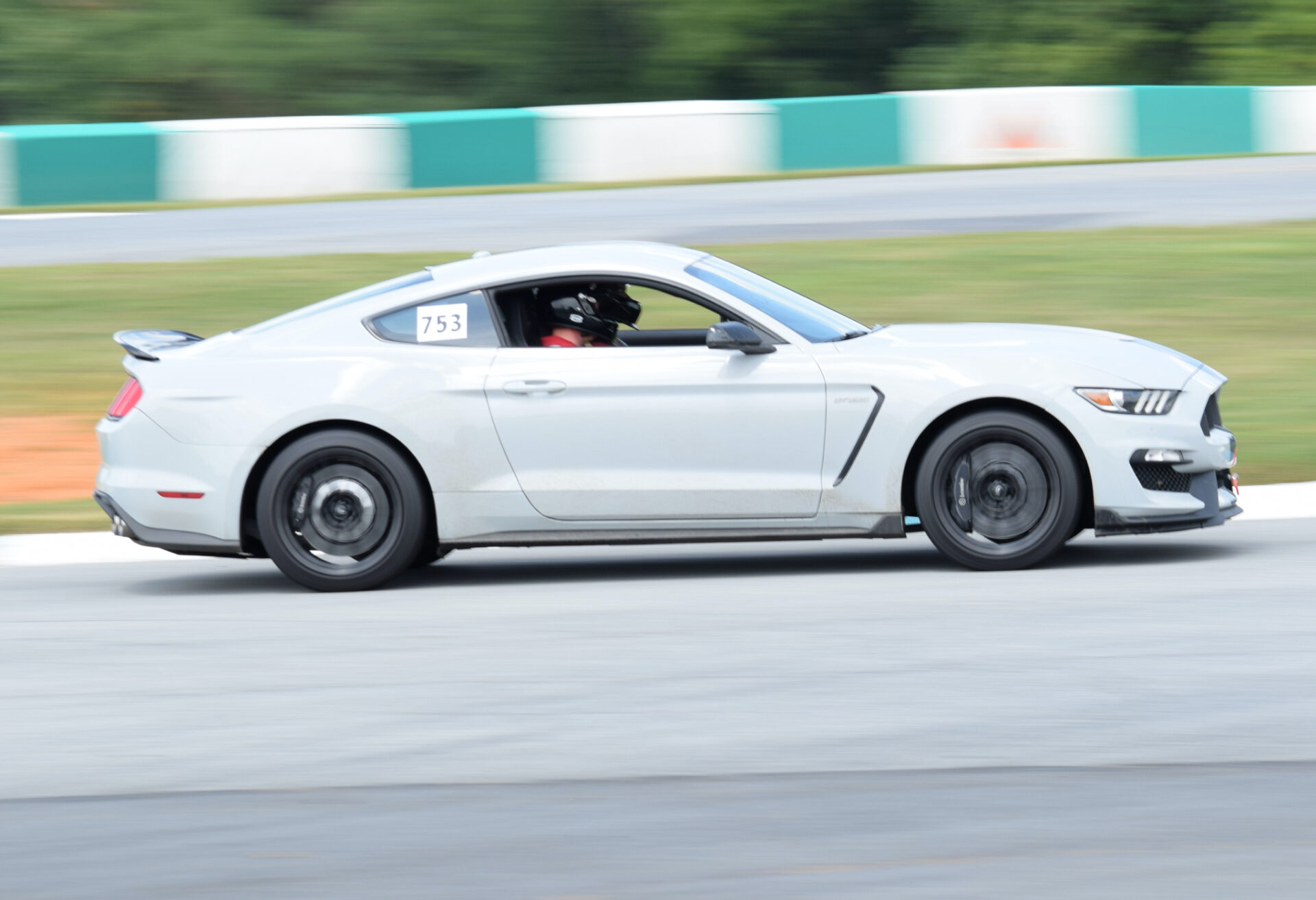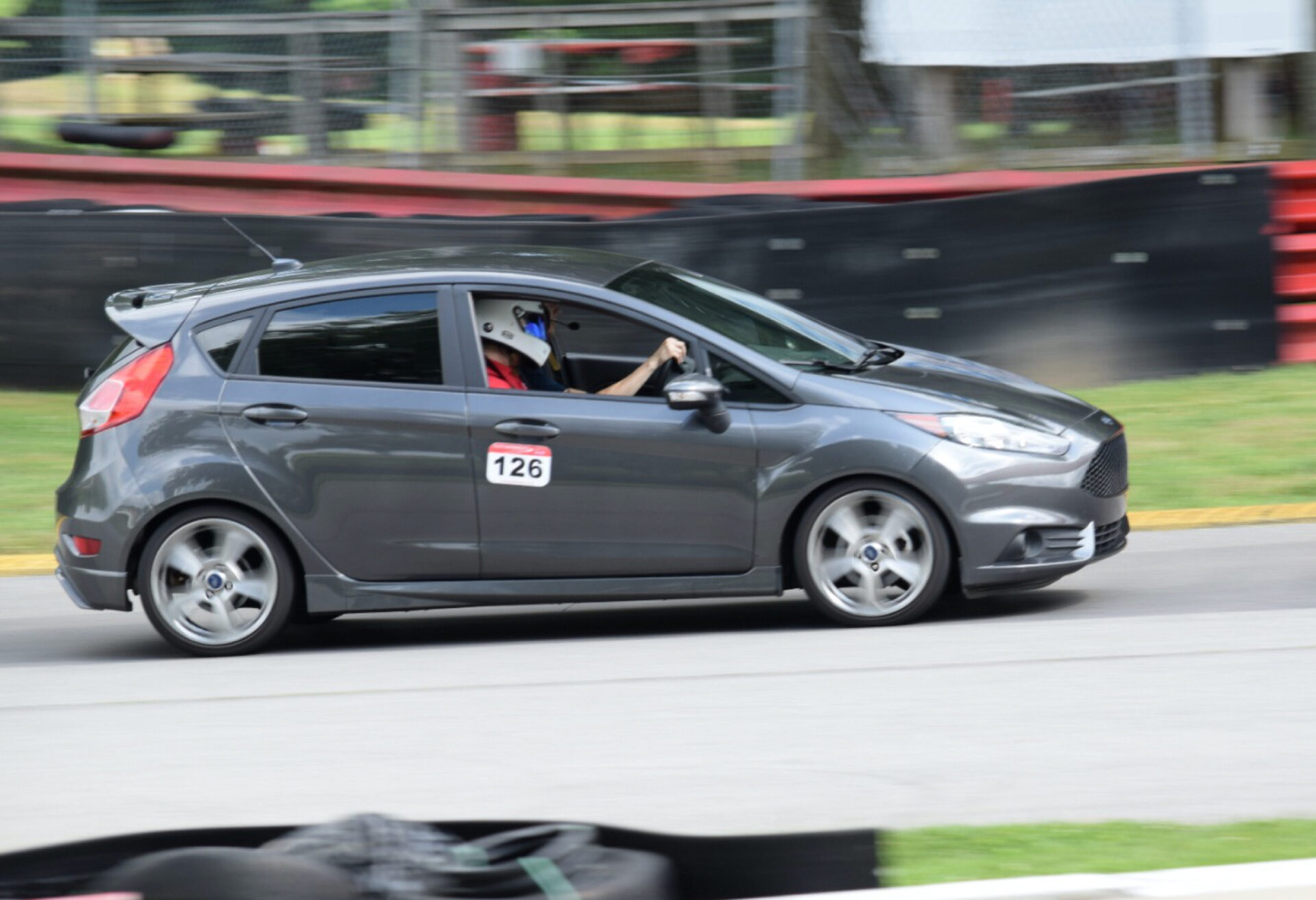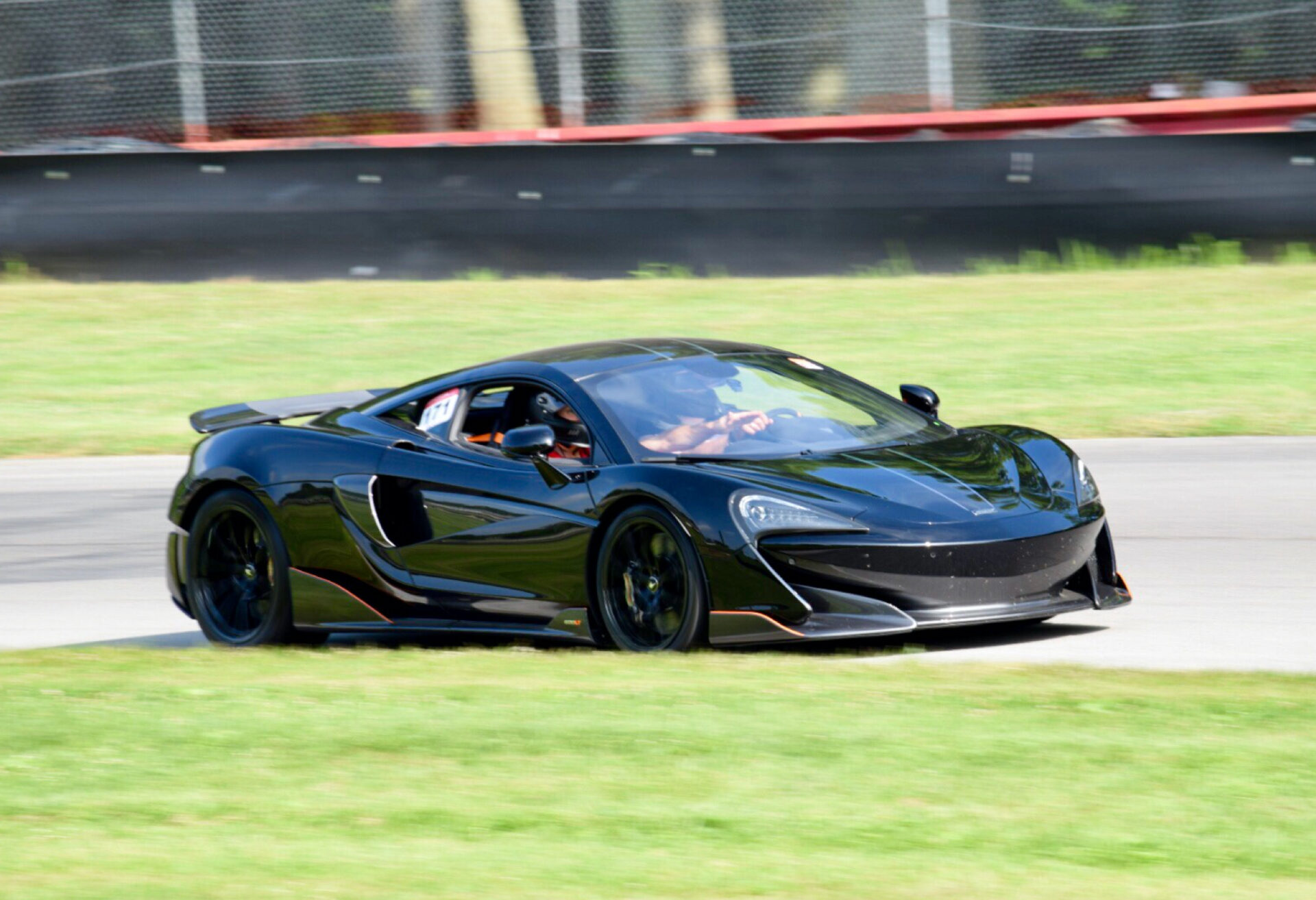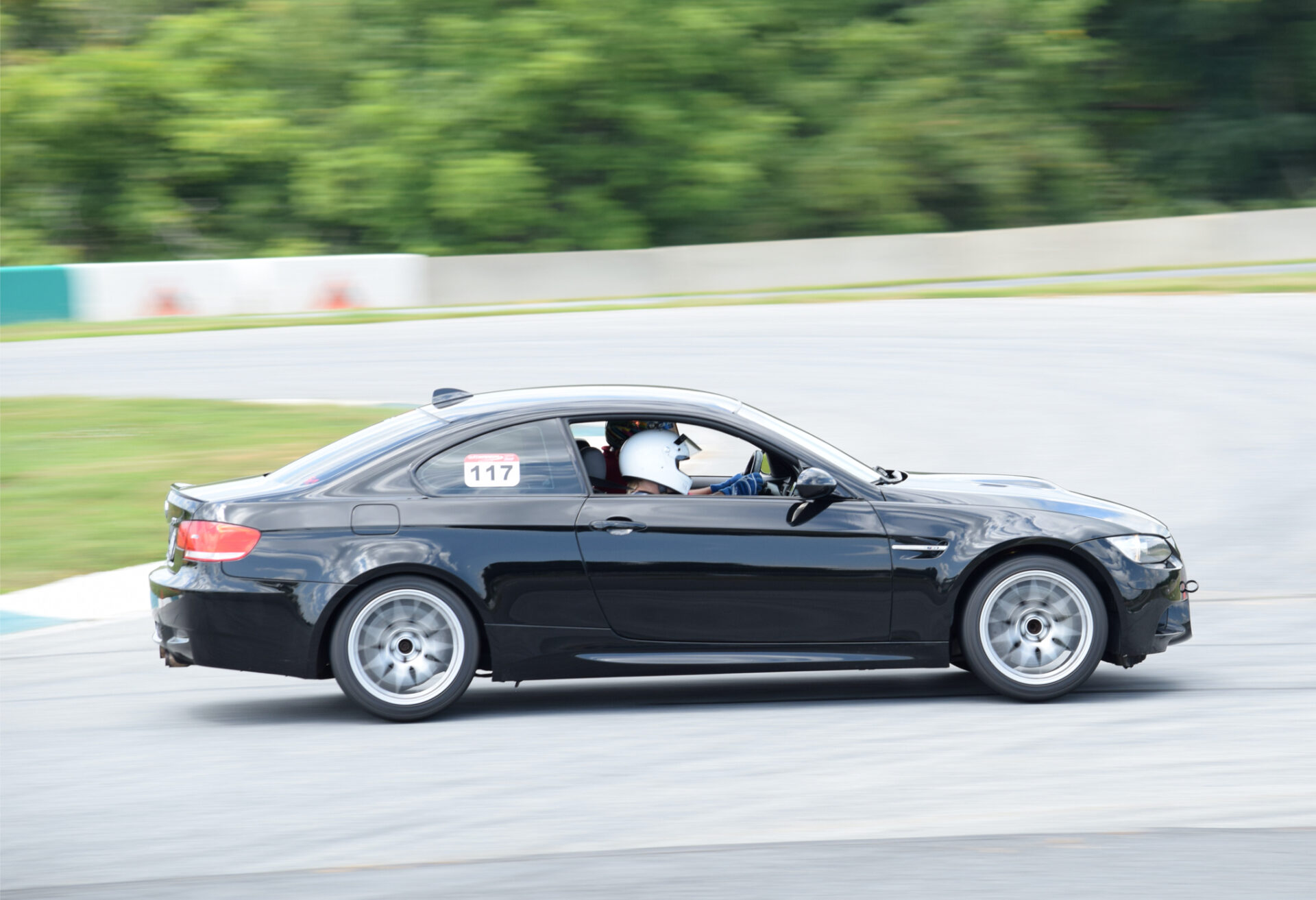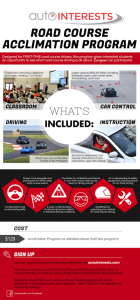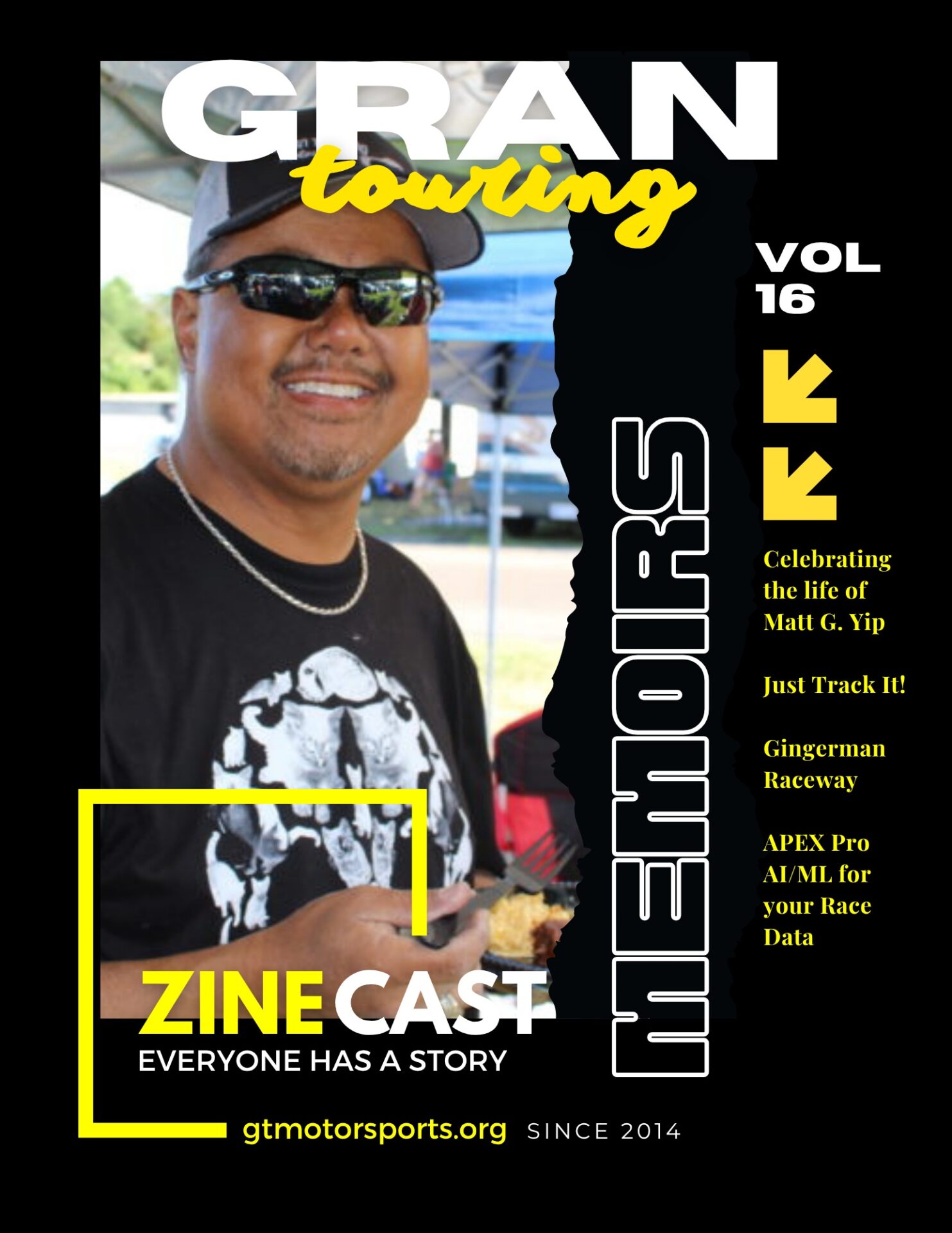There are so many choices these days to help you get “On Track” and picking the right one for you isn’t always easy. Enter Auto Interests, a professional motorsports event management business specializing in High Performance Driver Education, setting itself apart from the rest of the pack. AutoInterests origin story closely parallels that of GTM’s and so we’re excited to have Jason Kennedy, President of Auto Interests on the show to explain how it all fits in.
Tune in everywhere you stream, download or listen!
 |  |  |
“…AutoInterests started as a car club in 2004 wanting to learn to drive our cars fast but safely, off public roadways. Our group initially consisted of enthusiast friends and quickly grew through word of mouth. We’ve now transformed into the professional grassroots motorsports organization that we are today, sharing our passion for driving with anybody who wants to experience it! All makes and models of cars are welcome with no membership required” – Jason Kennedy
- Spotlight
- Notes
- Transcript
- Highlights
- Learn More
Spotlight
Jason Kennedy - President for AutoInterests

AutoInterests is a professional motorsports event management business specializing in HPDE (High Performance Driver Education) for sports car drivers. We started as a car club in 2004 wanting to learn to drive our cars fast but safely, off public roadways. Our group initially consisted of enthusiast friends and quickly grew through word of mouth. We've now transformed into the professional grassroots motorsports organization that we are today, sharing our passion for driving with anybody who wants to experience it! All makes and models of cars are welcome with no membership required!
Contact: Jason Kennedy at events@autointerests.com | N/A | Visit Online!![]()
![]()
![]()
![]()
Notes
Who/When/Where is AutoInterests?
How do you learn more, and register for AI events?
What is the AutoInterests HPDE program like? What expectations should a new student have coming into the classroom for the first time?
How do you become a coach for AutoInterests?
Track-Day Prep and unique features of AutoInterests: like the Trackside App, Acclimation Program, HPDE Protection Plan, HPDE Rewards Program, Spec-Panther Racing Series and more!
and much, much more!
Transcript
Crew Chief Brad: [00:00:00] Break fix podcast is all about capturing the living history of people from all over the auto sphere, from wrench turners and racers to artists, authors, designers, and everything in between. Our goal is to inspire a new generation of petrol heads that wonder. How did they get that job or become that person?
The road to success is paved by all of us because everyone has a story.
There are so many choices these days to help you get on track and picking the right one for you isn’t always easy. Inter Auto Interests, a professional motorsports event management business specializing in high performance driver education, setting itself apart from the rest of the pack.
Crew Chief Eric: That’s right, Brad.
And their origin story closely parallels that of GTMs. And so we’re really excited to have Jason Kennedy, president of Auto Interests, on this episode of Brake Fix to explain how this all works and how it all fits in.
Crew Chief Brad: And as always, I’m your host, Brad. And I’m Eric. So [00:01:00] let’s roll.
Crew Chief Eric: So welcome to break fix Jason.
Thanks for having me. Glad to be here. Let’s kick it off with your superhero, super secret origin story. Tell us all about the who, what, where, and when of auto interests.
Jason Kennedy: Well, it dates back to about 2004 and we started with no intentions of doing what we’re doing today as the, uh, Ford Taurus car club of all things.
This all started when the president of the club got this. Amazing idea to take everybody to a race track, Gingerman Raceway in South Haven, Michigan. And I’d never even heard of a road course before. I’d been drag racing and some stuff like that, but I was never really a, Like F1 fan or anything like that.
I just never paid attention to it. And I didn’t really even know what a road course was, let alone one that I could drive on. The guy’s name was Bob Gerbe and he was a really good mentor to me. He booked this event. And so, and a bunch of us went, we had no idea what we were doing with our, uh, [00:02:00] Stock Ford Tauruses and a couple of the guys had SHOs that we all had to drool over and all that.
So we went and we had a great time and like I said, we had no idea what we were doing. So we burned out brakes and ruined tires and we’re doing all kinds of things in the The paddock at the track and in the parking lot at the auto parts store. And, you know, it was just a nonstop weekend of car work, but it was a great time.
And that was the start of it. And, um, Bob had some, some challenging family issues and things like that. And unfortunately couldn’t organize those events anymore. So in talking to him, I got the dumb idea that I was going to do it because I loved it so much. So. I thought, okay, well then I’ll put these events together.
So we did, and we kept it going, and then we were going to Gingerman, you know, a couple times a year. And then we kept looking, oh, what other tracks can we go to, and stepping it up a little bit. Never in my mind was this ever going to be a serious business or anything like that. For me, I just did it because, well, I wanted free [00:03:00] track time.
And, uh, you know, over the years we had a good time with it, but Then everybody started getting older and being responsible and having kids and families and all those boring things. And the group was kind of slowly dying off a little bit. And we thought, well, we really need to branch out because doing these as the Ford Taurus club really isn’t all that marketable, especially since at that point, barely any of us had a Taurus anymore.
Um, I had switched to a Mustang and there was. All kinds of other things, you know, just
Crew Chief Eric: smart, smart move there. Smart move.
Jason Kennedy: Yeah, it was, it was a little more purposeful for what I was doing, but we decided, you know, we really need to transition this, the auto interest name and brand had been thought of at that time that we were starting to realize we needed to change our name for the track events.
And we had this brilliant idea of me and probably half a dozen other friends that we’re going to be like the next Jalopnik, right? We’re going to. Start this blog. And we’re going to do all this stuff. Cause we all had [00:04:00] plenty of opinions about cars and went to all the auto shows and everything else. Well, generating that kind of content, keeping up with that proved to be more challenging than, than anybody was going to keep up with.
This sounds awfully familiar, but please, please continue. I
Crew Chief Brad: feel like we’re listening to our
Jason Kennedy: origins. Yeah. Yeah. It’s like our obituary, but anyway, that’s cool. That’s funny. So, you know, then we thought, well, we already made this website. We already have this. And we hadn’t, we had just started to, to kind of put a little bit of content together.
Hadn’t really even told anybody it existed without, well, let’s just use this name for the events. So, okay, well, that’s what happened. And, and we did that. And then it wasn’t really until about 2011, 2012, somewhere in there that, you know, by that time we were going to three or four different tracks and, you know, I’m thinking, okay, you know what, maybe we can make a go of this.
And I kept adding another weekend, another weekend, another weekend, year after year, and now [00:05:00] here we are doing close to 35 event dates a year in a season. And we’re busy, you know, Basically, every weekend you can be in the Rust Belt. I mean, at this point, we’re the third largest E. E. organization in the country.
And, you know, I realize PCA at a national level, and some of the clubs do more than us, but in terms of independent chapters and all of that, it’s really interesting. It’s a truly grassroots story, and it just came out of You know, a club of a bunch of guys wanting to have a good time with their cars, and that’s where we came from.
So are you
Crew Chief Eric: guys
Jason Kennedy: headquartered out
Crew Chief Eric: of Michigan, then,
Jason Kennedy: or somewhere else? No, actually, we’re headquartered out of Canton, Ohio. That’s where I’m from. That’s where a lot of our instructors are from. We’ve kind of got a pretty strong Epicenter of the group, our customer service person, Andrea and her husband, Mario, they’re here now.
They’re actually we’re from the Detroit area, but they moved down here a couple of years ago. And it kind of works out really nicely because we’re triangulated right [00:06:00] between Nelson ledges, middle Highland pit race. They’re all about the same distance. And lucky me, I was just born here. So that’s, I don’t know how that worked out that way, but it did.
So of those three, which one do you call home? I’d probably have to say Nelson, just because that’s where we started. That’s the, in my mind of those, that’s the real grassroots track. You know, that’s one with the most history. Nelson was the second track I ever drove on. Oddly enough, I drove six hours to Gingerman to drive that one first and then later found out Nelson existed and I’d have to call Nelson home for sure.
Crew Chief Eric: You guys do 35 events a year all over the East Coast and the Midwest. Which would you consider is your favorite now that you have all this experience?
Jason Kennedy: That’s really a tough one. I mean, speaking as an event organizer, I’d have to say Pit Race just because they’ve built up their amenities. Very, very nicely.
They’ve got, you know, great paddock space. Everything’s paved, great power, uh, air conditioned bathrooms, you know, a nice big air conditioned classroom, beautiful new garages, you [00:07:00] know, from that perspective, that’s great. But from the actual driving experience standpoint, pit race is certainly a contender on the track itself.
It’s brand new asphalt. They did a 1. 2 mile edition of the South track just a few years ago, which still feels like yesterday. It’s a really challenging track to drive. You know, there’s always a classic, uh, mid Ohio too. And I’m, I’m kind of one of the weirdos that likes mid Ohio and the wet. I enjoy the rain line at mid Ohio.
So is there such thing as a
Crew Chief Eric: rain
Jason Kennedy: line? Really? Well, in Mid Ohio there is for sure. Not at all tracks really, but in Mid Ohio there is for sure. And that really comes from there’s just, there’s so much sealer on that track that it’s really like an ice skating rink. I mean, it is, it’s really bad if you hit that sealer when it’s wet, it’s just like hitting black ice on the street.
Crew Chief Eric: I have to agree with you. Pit race is definitely in my top five. I love going there ever since we started going there. Uh, you know, everybody’s like, when are we going back to pit? If you tell me we’re going to pit, [00:08:00] everybody’s packing up and getting ready to go, but I I’m with you. I’m an odd ball as well.
Mid Ohio is still like my number one and road Atlanta is a close second to that. They’re just such technical, fantastic tracks with a long history, especially Their prominence and IMSA and Trans Am and things like that. So fantastic. So we’re, we’re, we’re hitting all the marks here for sure. Let’s go back to talking about auto interests a little bit.
And, you know, you guys have been around for a while now, but you know, a lot of us here on the East coast, We’re starting to see more and more names come up, you know, thanks to relationships with people like HPD E Junkie and other groups where, you know, your logo is starting to pop up more and more. You know, we want to ingratiate everybody to auto interests, especially, you know, again, here on the East Coast.
So what makes you guys different than the names we’re familiar with?
Jason Kennedy: Sure. And that’s a great question. We get that question a lot. And, you know, I think the grassroots nature that we really came up in. Helped us build our differentiators. You know, number one is I don’t think [00:09:00] you’re going to find another organization that’s truly focused more on beginner learning and being welcoming to new people into the sport.
We’ve gotten really, really good at getting first time drivers on the track. We had over 700 first timers drive with us last year that had never been on a track before. And the repeat customer rate is through the roof. That tells me everything we need to know, but. We’ve worked really hard to build an instruction program and groom instructors, you know, to, to do a quality job.
We don’t want the instructors that are there for free track time. We want the ones that are really interested in getting people into the sport, keeping them safe, and most importantly, having them. Letting them have a good time. You know, that’s what it’s all about. If you come to the track and you just can’t figure out the line or you can’t figure out some technical portion of it, that’s no fun.
So we find the instructors that are going to make sure that it is a good time that you are able to get the hang of it and you can go at your own pace. There’s no pressure. In that context, we [00:10:00] add technology tools to make that even better. So, you know, everybody tries to find good instructors, but to me, it’s more about the systematic approach of how you manage the educational process.
So we have a system we call Trackside and we have a learning module within that. And we have an 88 point driving curriculum that when you work with one of our driving instructors, they’re checking off every single one of those individual criteria. And they’re leaving you notes in there. They’re telling you, you know, you’ve mastered this one.
You’re at 50 percent on this one. Uh, it leaves you with a report card at the end of the day of very specific things for you to work on and also to communicate to the next instructor that you have, where you stand, you know, from the learning perspective, that’s definitely a big differentiator for us because not only philosophically and culturally, do we have.
The superior instructors in my opinion, but we also build a system to support all of that and we layer that on top of what we call an HPD [00:11:00] points system. So we’re the only players in the game where you earn points for every event you sign up for. So if you’ve ever been to. A Dunkin Donuts or a Starbucks or whatever, based on what you spend there, you get stars or points or whatever they call it.
We have a system that works the exact same way. So every time you sign up for an event, you get points. You can redeem those for coupons for discounts later. The icing on the cake is, as you master driving skills when you work with one of our instructors, you get additional bonus HPDE points. added to your account every time you master skills.
So we put our money where our mouth is in terms of the education and the instruction.
Crew Chief Eric: That’s really, really interesting. And that’s extremely unique. Let’s set some expectations for the newbies. Since you concentrate on the newbies a lot, let’s talk about the DE program in the classroom, because a lot of people think that you just show up to the track and you get in a car and you’re going to do some laps.
And Brad and I are both coaches and we know that isn’t the truth, right? We spend most of our weekend. [00:12:00] In the right seat, trying to, you know, get the safest way around the track and all that. But there’s also a classroom aspect of it. And every organization has a different way of approaching DE, the education side of, you know, high performance driving.
So what are the expectations for a new student? Details that they may not pick up until they get there their
Jason Kennedy: first time. So there’s many. Dimensions of that question. So in terms of just what to expect in the classroom, one thing that we’ve done, um, you’re going to find a theme here that we’re big believers in technology and, and using that to support what we do.
So we have something we call a classroom cart, and it’s about a eight foot long cart that a big giant screen pops up out of, and it’s all self contained as a full AB set up in a sound system. Mixer, everything else. And we built that because most of the tracks we go to have virtually zero infrastructure for a classroom environment.
Of course, pit race is an exception to that. Summit point is an exception to that, but even [00:13:00] there, like at summit point with the different circuits, it’s inconsistent of what resources you get on each circuit. So we said, you know what? We need to build something to be self contained to maintain the quality level, regardless of where we’re at.
We have a full database and bank of videos. We have in car video. We have drone footage. Uh, we have all kinds of different things to support the learning process. Of course, we have PowerPoints and things of that nature that help you bisect a corner and explain where. The apex is and we’re turning and turn out are all these things.
So we realize that different people learn different ways and, you know, for the visual learners or people that need to see video or graphic support for things, we bring all of that with us. That’s the first thing in the classroom. Now concerning what a brand new driver would experience when they come to one of our events, you know, the very first thing they’re doing after the general driver’s meeting is they’re in the classroom.
So for first time drivers. The way we set it up is the first classroom is [00:14:00] meant to be very, very digestible. What we mean by that is we’re basically just going to tell you, look, here are the safety protocols, make sure they understand the flags, and then we’re going to tell them, you know, look for your flaggers.
Learn the lay of the land, uh, and we actually pace that very first session. So there’s a pace car in it. Uh, we just want them to understand where to be on the track, where the pit in is, where the pit out is, uh, where all the staff corner worker stations are, and all that sort of thing. So we, we try to ease into it.
So we don’t want anybody just going. Gung ho out there that doesn’t know where they’re going, doesn’t know what they’re doing, and those types of things. Obviously, that’s a huge safety issue. So, we do a total of three classroom sessions. The second and third classroom session get more into vehicle dynamics, technicals of the particular track that we’re at, and things of that nature.
So, we ease into those things throughout the day. And then the intent is that each session on track, you’re building a little bit more speed each time gradually [00:15:00] as your instructor is comfortable with. And then we layer on top of that at venues that supported, uh, car control. So we have car control drills that we’ve specifically designed to basically accelerate the understanding of handling dynamic.
We want you to get sideways or understeer, oversteer, all those different things. We want that to happen in the car control area before it happens to you on the track. So you know exactly how your vehicle is going to behave in those situations.
Crew Chief Eric: So what’s the progression like for returning drivers to auto interests?
And I don’t know if you use colors for your groups, do you use letters for your groups? How do you move from beginner to novice to intermediate? We’ll use those designators, those labels for now. What’s that like?
Jason Kennedy: Fun fact about me is I’m largely colorblind. You’ll find that very purposely throughout our program, things are color coded, but they’re also either using words or numbers.
So that if there’s anybody else that’s colorblind, that that’s not an [00:16:00] issue, which I’ll sidetrack a little bit. Somebody once didn’t stop for a red flag because they told me they saw an orange flag. And as we know, there is no orange flag. it’s worse when the red one looks green, right? That that’s a bigger problem.
Yeah, that’s bad news, but yeah, anyway, back to the run groups and the progression. So our very first run group, there’s two of them and I’ll explain why there’s a first timer. Which is pretty self explanatory. It’s I’ve never been on a track before. It’s my first time doing anything like this. Then we have what’s called acclimation and acclimation is simply a half day version of the first timer program.
If you think this is something that you want to do, but you know, you’re not quite sure if it makes sense to spend the money or the full day commitment to all of the sessions for an entire day. You can basically do a half day program where you get two on track sessions and you get three classrooms and you get the car control and then you can decide, Hey, is this the right thing for me?
Those are [00:17:00] the two, you know, beginner level groups that we run first timer and acclimation. So then after that we get to novice. So our novice group is assumed to have experience. And that’s something we really have to train our instructors on because if they’ve trained with other organizations to them, sometimes novice means that they’re completely.
Brand new. That’s not the case with us. A novice means you’ve had some experience and linking that back to the technology in our online system, you have to be approved for a run group level. So if you go and you create a brand new account on our website, you can only access first timer or acclimation until you submit a driving resume.
And get approved for a higher group. So we systematically enforce that to make sure people are in the right place. So then after that, we have novice solo. So that’s pretty self explanatory. You’re still at a novice pace. You’re probably at the upper end of a novice pace on track, but you’re safe enough and you have the situational awareness and everything else.
[00:18:00] That’s necessary to not need an instructor with you and you’ve reached the level of self study. And by the way, all of this links back to our 88 point curriculum. So one of the pet peeves I always had is that our sign offs for run groups were subjective. So somebody would go for a checkride with an instructor and someone would just have to say, well, I think they’re good to solo.
Well, if you go into your account on our website, we’ve articulated exactly what that means and exactly which of those 88 skills you need to have mastered before you’re moving on to solo. We’ve really taken a lot of time to build that out and make it very objective. So then after novice solo, you have intermediate and advanced, you know, again, those are of course broken down in the curriculum as well, uh, in the system.
Crew Chief Eric: So when does the 88 point system stop when you reach intermediate or advanced? Like when do you complete that checklist?
Jason Kennedy: There’s only 10 or 12 points in advanced, so it stops after advanced essentially, but the bulk of [00:19:00] them are in the first timer and novice level. So it’s very heavily weighted. There’s 60 some that are in the first timer and novice
Crew Chief Eric: level.
And students on track, what’s your average run group look like for those, you know, those two lower levels, let’s just say.
Jason Kennedy: So we have a formula that we use that’s 13 cars per mile. That’s our maximum run group size. Okay. Thanks. And then, uh, we trim from that for the novice groups. We will take about 10 to 15 percent off for the novice groups, just depending on the track.
Crew Chief Brad: You were mentioning, you know, the different run groups. You mentioned the first timers, the acclimation, novice, intermediate, uh, advanced. I’m assuming instructors might have their own run group or do they run with advanced? Well, what I’m trying to get at is it sounds like a lot of run groups. How much track time is somebody looking at?
You know, on a one day basis, you know, if they come to one of your events.
Jason Kennedy: In aggregate, you’re going to get two to two and a half hours of hot track time per day, and a large chunk of that does factor in what is usually a [00:20:00] 40 to 45 minute open session at the end of the day. Um, novices do have to qualify for that, and by that I don’t mean a good lap time.
I mean, a good safety record and a good situational awareness for the rest of the day. Instructors do have their own run group. There aren’t a lot of those during the day though, because the instructors also have the right to drive in any other run group that they want to. But the instructor run group, those handful of sessions, are for the instructors to go at instructor speed if they want to do that.
Because when they’re driving in the other groups, They’ve got to hold the pace of those groups.
Crew Chief Brad: Yeah, and you mentioned the, uh, the open session towards the end of the day. I’m assuming that runs at whatever the rules are of the lowest common denominator in the group. We follow
Jason Kennedy: intermediate rules for that.
So if you’re a novice and you’re approved to go in the open group, you might gain a passing zone, but it’s not going to be open passing. It’s always passing zones.
Crew Chief Eric: And you guys use point buys, right?
Jason Kennedy: Yes, always, always point buys every [00:21:00] single run. Gotcha. And
Crew Chief Eric: the
Jason Kennedy: student to instructor ratio, what’s that like?
Is it one to one? Is it two to one? In the first timer group and acclimation, it’s one to one. In the novice group, it’s two to one. If you’re approved to be a novice driver. Then you’ll have an instructor every other session.
Crew Chief Eric: Since we’re talking about coaching, let’s dive into that a little bit more. Let’s dive into that process.
So, you know, a lot of us are now becoming more familiar with auto interests. How do we transition from existing groups like SCCA and NASA and Porsche club that have certification processes to an organization like yours? Is there reciprocity there? Do you accept the certifications that we already have?
How does that whole process work? And what are the expectations of a coach Coming on board for the first time at auto interest.
Jason Kennedy: So from a coaching standpoint, there’s been some industry initiatives to try to standardize that. It’s one of those things that we’ve looked at those and we’re not satisfied with where those programs are.
You know, it’s one of those things. Yes, there’s [00:22:00] reciprocity. It’s kind of informal. You know, there’s some groups that we’re pretty close. I would say friends with more so than others, you know, specific chapters of certain organizations. You know, we’ve got a lot of overlap with. like NASA Great Lakes instructors.
So there’s a lot of these people that we know that that it’s not hard to have one of our existing instructors kind of vouch for. When somebody comes in and they’ve instructed for maybe some PCA region that we’ve had no contact or experience with, we’ll ask them to supply a resume, we’ll ask them for references, check on those.
I don’t think we’ve ever had an instructor apply that that wasn’t at a legitimate level with the Whatever other organization they’ve instructed with, but we we check those things because we’re putting people in cars with people that have never done this before, and they’ve got to know that the person in that right seat is going to be giving him sound advice.
And then from instructor recruitment standpoint, we actually have a 5 step instructor recruitment and mentorship program. So what we [00:23:00] do each year is we talk to some of our advanced drivers that maybe have been advanced for, you know, three, four or more years at this point, and we’ll find out, do you have the right attitude and desire to do some coaching?
And if you do, and we feel like you have the right personality traits for that, then we have an instructor mentorship program. So we have levels one through five of instructors defined. Uh, in our program. So if we bring you in as a level one instructor, that’s considered a level one mentorship program. If it’s your first year ever instructing, you will have one of our senior instructors shadowing with you the entire step of the way.
So you’re never instructing on your own for the first time with us. We try to do at least three events where you’re shadowed and working with one of the senior instructors. If everything’s going well, the student feedback’s good and everybody feels good about it, then we’ll bump you up to a level two, which linking back to the [00:24:00] other run groups, you know, we would consider a solo instructor.
Then it kind of goes up from there. Now, the progression beyond that is really more based on your dedication to auto interest. So You know, are you coming to a significant number of events each season? Are you getting good reviews? Things like that. So it switches from, you know, general competency verification to, okay, how committed are you to our organization?
Crew Chief Brad: Given the current times with COVID and everything, you mentioned in car instruction and everything. How are you all handling the instruction with last year’s events and events moving forward this year with, you know, the restrictions and everything of COVID and the fears of getting in the right seat with somebody else in close proximity and all that?
That’s where we again, lean
Jason Kennedy: on our technology. So There’s several things we did with our technology platform to manage COVID. One is we have a completely paperless and contactless check in system. So you can sign your waivers, tech forms, and everything digitally ahead of time. And that’s all seamless. And at that same time, You’re [00:25:00] asked a question that you save in your profile that says, are you comfortable with NCAR instruction or would you prefer out of car instruction, or observational instruction we call it.
And so you flag that preference in our system. If you do not flag a preference, we will just assume that you are not comfortable with NCAR and respond accordingly. And then we collect that same information from our instructors. So we ask the instructors and we say, Are you comfortable with doing in car instruction or would you prefer to support the observational program?
So we very much believe in making that an individual choice. It’s a personal responsibility thing. All indicators would say that that HPDE in general is a pretty low risk activity in terms of COVID. You’ve got Tons of airflow. You know, your windows are down going highway speeds are better around a track.
You’ve got helmets on it’s generally considered pretty low risk, but obviously we want to respect people’s preferences and concerns and, you know, everybody knows their own personal. [00:26:00] Medical and health situation better than anyone else. So that’s how I managed that. And we also invested in some FM transmitters.
So in our observational instruction, we can maintain communication with a student that is out there on their own, and then we can immediately communicate and correct any issues or anything like that.
Crew Chief Brad: So when you mentioned FM transmitters, I’m thinking something along the lines of, I want to connect my phone to get my music and it connects to an FM channel.
Am I way off base or is there’s better technology out there? I’m a boomer. What can I say?
Jason Kennedy: Well, we, we tried to make it simple for, for the boomers and everybody. So it literally broadcasts on an FM radio frequency. So, um, it’s a device that the instructor has. That’s supporting the observational instruction, and they’ll find a, an open FM frequency, you know, these aren’t obviously powerful enough to build a radio station, but they’re powerful enough to go, you know, a [00:27:00] few thousand feet to a car that’s on the same track as them.
So we find a radio station that doesn’t have anything in the local area. Uh, we set the transmitter to that, then in your car, you set your radio to that same channel or same frequency, and then we can communicate with you, and it’s one way, but, you know, we found that that’s sufficient, and the interesting thing was, we looked at that data throughout the course of the 2020 season, and over 95 percent of people were okay with in car instruction, so it’s It’s actually been a pretty small group that we’ve done the observational with, but in the cases that we’ve done it, it’s, it’s worked out fine.
And, you know, we’ve, we’ve made the best of it.
Crew Chief Eric: So let’s unpack this observational coaching a little bit more because I want to think I’m probably not the only one scratching my head going. When I think observational, I’m thinking standing at a corner, watching a car go by like a flagger, or is this a lead follow?
I mean, how do you describe what it is that you do in this observational task? So we’ve
Jason Kennedy: done it as lead followed. I [00:28:00] have kind of a trusted set of advisors with this. I don’t like to decide these things myself. You know, we’re doing a big enough volume of events and things like that, that, you know, I want other people’s informed opinions in how we’re formulating these policies.
So we have a safety steward who has been race control at numerous different tracks for many, many years. Uh, we have co chief instructors, and then we have a cohort of senior instructors that support, you know, our mentorship program and all that. And those are the people that I confer with when developing those procedures.
And so we came to the consensus that lead follow was the safest way to do the observational instruction, because then You know, we can get into at least a little bit of passing exercises, things like that. So you can do a little bit of like leapfrog with the instructor back and forth. Um, if the instructor is following behind and they see that, you know, there’s a better line to take somewhere, they can communicate and conduct a pass and then.
Show the students a line, then they can get back, let the [00:29:00] student pass them, you know, let them try it and see how it progresses. I found that to be much more effective than the corner station type of observation. Um, I’ve actually participated in that. So that’s something that I do personally is I, I go to other organizations and instruct and I try to do it with ones that use a variety of methodologies.
Um, so that we’re honing our craft and staying sharp and that when people are trying to advise me that I have some actual experience hands on with trying these things.
Crew Chief Eric: So let’s switch gears a little bit and let’s talk about the, now you’ve got my interest. Like we’ve heard about all the really cool things that auto interests can do.
And I want to come to an event. Where do I go to register? Do I go to MSR? Do I get a club registration or is it on your guys portal? What’s the best way to find an event?
Jason Kennedy: The best way to find it is auto interest. com and that is with an S, but we do on both domain names in case you forget that part of the reason that we have our differentiator and [00:30:00] in our online curriculum and our, you know, technology systems that support a lot of these things I’ve described is.
The other platforms don’t do it. So that’s why we’ve built our own. We can do a better job of deeper engaging with participants by using our own platform. You know, we list our events on other platforms, but you can’t sign up for them there because we need to collect the right information from the participants and have them directly in our systems to provide the best experience, you know, using all of these tools that we’ve built.
Crew Chief Eric: With all these run groups throughout the day, we’re looking at maybe an average of 18 to 22 minutes per session. Is that about right?
Jason Kennedy: We call them 20 minute sessions, but yeah, that’s what they work out to. Every track has a little bit of nuance to that just because they may checkered in different locations and things like that, but they, we try to make them about 20 minutes.
Crew Chief Brad: So if people are getting about 20 minutes of session, you say about two, two and a half hours a day. But what does that come out to, uh, for track time per dollar?
Jason Kennedy: The registration costs at our events directly [00:31:00] reflect the, the cost to rent the track. You know, that’s a common question we get is, well, why, you know, why is there such a big price difference per day or per weekend?
It directly reflects the rental costs. I mean, some of these tracks are exorbitantly expensive to rent. Some of them aren’t. But doing the math out in terms of You know, dollars per session, um, that’s probably more complicated math than I can do in my head.
Crew Chief Eric: Well, let’s do it this way. What’s the average cost per weekend that people would be looking at if they’re interested in coming to an auto interest weekend?
Jason Kennedy: So per day, you know, on the lower end of the spectrum, you’re going to be around 200 a day. Um, on the high end of the spectrum, it can go up to as much as 350, uh, some of the higher end tracks. Uh, the one thing I will say is, uh, we do have early discounts. So the earlier you register, we do things in price tiers.
So those tiers are both time centric and based on the number of spots that are sold. So if an event is selling extremely [00:32:00] quickly, the tier could advance more quickly. Generally, we hold them to the dates unless. We have a specific situation we have to deal with, but so on our website, you’ll see, you know, tier one pricing is from this state to this state and then tier two and three, some of them have four tiers just because we tried to the higher cost tracks, break it down a little bit more, but for us, you know, the big thing that kills us is the weather watchers, right?
Like everybody wants to have a bright, sunny weekend. You know, we’re on the hook for the track rental costs. You know, regardless, we signed the contracts back in October and November. So we have no idea what’s going to happen in, you know, May, June, July, and whenever. Um, so for us, it’s kind of one of those things of, we offer the incentive to sign up early because if you commit early, then we feel a lot better about it.
Um, that we’re making our nugget that we have to get over for that. But actually that feels like a good time to bring up the fact that we do offer something we call HPDE protection plans. So that’s something unique to us as well. It does not cover your car, it [00:33:00] has nothing to do with, you know, on track insurance, but what it is, is we will cover the cost of lost track time.
So, if it rains, if you break something, if you get sick and you can’t come to the track, if you have a death in the family, and a variety of other factors, you can buy the HPD protection plan. It usually costs somewhere around 10 percent of the total. Registration costs. It’s, it’s very similar in price to like travel protection with an airline or something like that.
We tried to price it kind of on the lower end of that spectrum, but that’s something that as far as I know, no other organization offers and that is extremely unique and the reason we did that is. You know, things happen and we have a history of being fairly generous with what we call courtesy credits, because we do feel bad when those things happen, but, you know, we can’t eat all of those.
And we try to be generous and as much as we can, but there are times we’ve been taken advantage of with things like that. So we thought, why don’t we put a program together to. [00:34:00] Make this a systematic thing with a defined benefit. And then everybody feels good about it.
Crew Chief Eric: So in anticipation of my first event with auto interest, right?
So I’ve done my registration through, I’ve set up my profile. I’ve done all this stuff through the portal and through the website and whatnot. What comes next? Do I tech my car? Do I just wait for a packet to show up via email? What’s the next set of tasks that are going to be delivered?
Jason Kennedy: There’s two ways to find that.
There is a pre event guide that’s posted on our website that really spells out in granular detail, uh, how all that works, but you’ll also receive about one week prior to the event, a pre event email. It’s basically all the information that is in the pre event guide, with the exception that if there’s any locally specific things going on, you know, at that time with a particular venue, uh, you’ll want to watch for that in the pre event email.
Generally speaking, the flow of activity at our events is consistent across the board. We try to, you know, make it easy. It’s [00:35:00] just kind of like, if you look at any franchise like McDonald’s, if you come to one event, then you know what to expect at all of them. So we start the day off with a tech inspection.
It’s generally from 7 to 8 AM. The times vary a little bit per track, just because there’s a little bit of. Schedule deviation from time to time, but usually it’s 7 to 8 a. m. Tech inspection process is really streamlined. If you go on our website into your account and fill out what we call your pre check in, then you can complete the waiver.
You can complete your tech form. So when you show up for tech inspection, you’re completely contactless and kind of a drive through sort of format. Tech inspectors will have you pop your hood, open your trunk. You know, they’ll do a look around for any leaking fluids, check the condition of your tires, things like that.
You know, we don’t disassemble things from the car in tech inspection. So we’ll check everything that we can see. And, uh, we check your helmet to make sure you have a current spec helmet. Uh, once you go through tech inspection, you kind of [00:36:00] claim your paddock space. You can claim your paddock space either before or after tech inspection.
So if you want to unload before you go through the tech inspection, you can do that, or if you just want to show up at the track, drive through and then go unload, it’s, it’s up to you how you want to do that. And then we start the day with the driver’s meeting.
Crew Chief Eric: Are coaches self teching or do they go through tech as well?
Jason Kennedy: Coaches self tech.
Crew Chief Eric: We’ve got all this down, you know, we’ve got our tech inspection, we got our pre flight checklist, we’ve gone through all these portals and all this kind of stuff, but you know, the hot ticket these days, the thing that’s on everybody’s mind is always safety. And so one of the things that has come up in the last few years is this concept of track insurance.
And we had four. Folks from locked in on here to explain how all that works and gory detail and whatnot. And we’ve asked many providers, is it something that you recommend your students invest in or something you get? And then the second side of that question is, is there a provider that you. Position during registration, say, Hey, you know, go check these guys out and get your track insurance.
Is it part of [00:37:00] registration? You know, a lot of folks are now bundling it in as part of the weekend fees, you know, things like that. So let’s talk about your thoughts on track insurance and then how does that work in the greater context of an auto interest weekend?
Jason Kennedy: Sure. So the purchase of track insurance is definitely.
a very personal risk assessment or risk tolerance type of exercise. So, you know, there’s a portion of our drivers that have dedicated track cars and, you know, some of them are very expensive, some aren’t. What I generally tell people is if you are driving a car on the track that you need to get to work on Monday, and especially if it’s not paid off, buy the track insurance.
If you have a dedicated track car and you know, maybe it’s a Craigslist Miata or a Facebook marketplace. You know, whatever, you know, inexpensive older car and you can afford to just lose it if something happens, that’s a good spot to be in. Honestly, if you can swing a dedicated track car, I’d always recommend it.
Definitely not [00:38:00] necessary for first timers, but as you progress in your building speed, that’s always something I I’d ask people to just at least consider it. Um, it’s not a huge deal, but I know that the, the experience definitely changes, but to directly answer the insurance question, those are the considerations that I tell people to think about, um, you know, do I need this car to get to work on Monday?
Do I still owe money on it that struggle to financially handle if I couldn’t drive it or if it was a loss now? I also don’t want to scare people at the same time. Our incident rate on average throughout a season is less than one percent. And by incident rate, I mean something that causes some kind of damage to a car.
So it could be driver error. It could be, you know, a light brush of a tire wall. You know, in the vast majority of our incidents, are very minor. We’ve knock on wood, never ever had to have somebody leave in an ambulance, never had a serious injury. The only exception to leaving an ambulance is we had a guy [00:39:00] who had a heart attack, but it had nothing to do with what was going on on track.
Uh, so kind of an anomaly, but it was a good thing he was at an event where there was an ambulance that kind of worked out. It’s generally a low risk exercise. I mean, I think statistically speaking, you probably have greater risk of having an incident on the street. Just because of all the distracted driving and unknown factors of animals and whatever else is out there, um, you know, I haven’t run any official numbers on it, but that’s my opinion.
And it’s also what you make of it. So if in the back of your mind, you know that, you know, Hey, maybe I don’t have money on this car, but I don’t need to drive it to work Monday, but it still was a lot of money for me, then drive it to reflect that. You know, don’t go full bore and, you know, it’s something you can control.
So that’s kind of the main point is you need to take a minute to assess your personal risk tolerance and respond accordingly.
Crew Chief Eric: So do you recommend people just go discover a track insurance provider on their own, or does auto interest recommended, [00:40:00] or again, is it part of the registration process?
Jason Kennedy: Yeah, it’s, it is not part of the registration process, uh, but we do partner with Hagerty for that.
In the rare instances that somebody has had a claim, we’ve received the feedback that they were very good to work with, like no issue with the claims, you know, and they, they do provide some support to our program. So it’s in full disclosure, they do support our program, but we only partner with organizations that we believe in.
There’s a reason that we chose them. You know, we, we used to partner with other providers. There’s a reason that we recommend Hagerty at this point.
Crew Chief Eric: Makes sense.
Jason Kennedy: Yeah.
Crew Chief Eric: We’ve talked about a lot of stuff. We’ve covered a lot of things. There’s some really unique pieces of technology, processes, procedures within auto interest.
Is there anything else that we’re not aware of yet that you want to tell us about, you want to share maybe something that’s upcoming new for this season or anything like that?
Jason Kennedy: There’s a couple of things. So one is our spec Panther series. So if you look at, uh, I think I know what this is. [00:41:00] The, we, we did kind of a soft launch of it in 2020 COVID kind of messed up our plans for that a little bit, but we’re doing a We’ll just say a firm launch of it in 2021, and it’s the Ford Crown Vic platform.
So that Ford called that the Panther platform internally, their name for it. So we have a race series built around that. So we’ve got about 10 teams already built. So on certain event dates, there is a SpecPanther run group baked into that. And we try to work out the schedule so that nobody is really losing track time over that.
You know, so we’ll add some extra time on if we have to, or something to make up for it. But yeah, the SpecPanther thing’s really fun. I have one of those cars. Um, I mean, they’re just, you can’t help but love them. The laugh the whole time you’re driving it and it’s
Crew Chief Brad: so much better than spec Miata, Eric, I’m telling you,
Crew Chief Eric: I mean, anything with the V8, right?
It’s like, come on, are
Crew Chief Brad: you, are you requiring competition license for that series?
Jason Kennedy: Kind of, [00:42:00] here’s what we’re doing for that series. So for 2020, it was basically just our instructors. And then. Um, a handpicked group of, of others that the instructors know. So we’re actually putting on a competition school, uh, with Tommy Byrne, if you’re familiar with him in May at Nelson Ledges.
And so we’re going to open up Spec Panther for any intermediate or higher drivers, and they have to either attend that competition school or hold a comp license from another organization. In order to participate in it and then at Nelson and Gingerman, we have really good relationships with both of them from an operation standpoint, we, we actually, our safety steward runs race control at those events.
And so we, you know, we hired their corner worker crew, but we also have a fully equipped safety truck and we do our own safety toes and dispatches and all that because we, we try to very tightly integrate. At some of the other tracks like Pit Race or Mid Ohio where they have the [00:43:00] fully equipped safety crews, we don’t have to do as much.
But, you know, again, kind of setting the expectation of what the consistent minimum standard is. You know, that’s why we outfitted a safety truck and everything because not every truck has what we feel is the right caliber of equipment. Makes sense.
Crew Chief Eric: So you said there were a couple things. What else is on the list?
Jason Kennedy: Uh, so the other interesting thing is a little less exciting to motorsports people probably, but in the technology world, um, our trackside platform that we’ve built, uh, we’ve now taken to market as a standalone product. So, uh, we have some racetracks and sanctioning organizations and things like that that are going to be using that coming up in 2021.
So that’s something that we’re making available for other motorsports organizations to use.
Crew Chief Eric: Very cool. Well, congratulations on that. Thank you. This is what happens when IT nerds run a DE organization. I’m just going to point it out. Yeah,
Jason Kennedy: it is. Yeah, that is exactly what happens.
Crew Chief Eric: So as we wrap this up, [00:44:00] Jason, this has been really informative, probably enlightening for a lot of people, especially in our area that are hearing about auto interest for the first time.
First time. I think this is really cool and we’re excited to get together with you guys here throughout the 2021 season. So I wanted to give you the opportunity to do your own shout outs to any, your sponsors, any partners, anybody you wanted to thank while you still have the mic.
Jason Kennedy: Uh, yeah, I appreciate that.
And. I for sure have to send a big thank you to Summit Racing Equipment. They’ve been a presenting partner of ours for, uh, I think we’re in the fourth year now. They give a lot of support to our program. They’ve been an anchor to our Driving Rewards program, which I think is something I forgot to talk about.
So that’s another program within our organization where every day of every event, all season long, we pick a safest driver, a most improved driver. And a good sportsmanship award and summit kicks in gift cards and swag for those individuals. So there’s three people that win every single day of every event all season.
So that’s a really cool program. They kick into that. That’s [00:45:00] also unique to us. Hawk performance breaks. They’ve been a partner now for a couple of years. And, uh, so they’ve been very supportive. They’re kicking in some swag and some other items. We also have four auto interest drivers at 30 percent discount on all Hawk products.
That’s a really cool thing. And you know, the last one is a Malco products. So they are based in Barberton, Ohio. They’re pretty local to us, but they manufacture a professional line of detailing products. So if you need to get all the rubber chunks and everything off your car. After a day at the track, they’ve got the stuff to do it.
And, um, they’ve been a really good partner too.
Crew Chief Eric: So Jason, I can’t thank you enough for coming on the show. Like I said, this has been super informative. It’s given us an insight into yet another group that’s out there in the HPDE world that we didn’t realize. That we had so much in common with and that has been around for so long.
So for everybody out there, that’s listening, if you want more details on auto interests and their program, visit auto interests [00:46:00] with an S dot com, or follow them on Facebook and on Instagram at auto interests LLC, or use their online contact us form on their website. So again, Jason, thank you so much for coming on the show.
This has been fantastic.
Jason Kennedy: Yeah, thank you. And one last thing I’d like to throw in, um, for your listeners too, we are offering a 10 percent discount on our summit point, uh, season opener to your listeners. So if you use the coupon code GTM on auto interest. com for that summit point season opener, April 24th and 25th, that’ll give them 10 percent off.
Crew Chief Eric: Awesome. Well, thank you for that. We really do appreciate it. We hope to see you there. Will you be attending that event?
Jason Kennedy: Yeah,
Crew Chief Eric: I’ll be there. Awesome. Well, great. Thank you so much. Thanks guys. Bye bye.
Crew Chief Brad: If you like what you’ve heard and want to learn more about GTM, be sure to check us out on www. gtmotorsports. org. You can also find us on [00:47:00] Motorsports. Also, if you want to get involved or have suggestions for future shows, You can call or text us at 202 630 1770. Or send us an email at crewchief at gtmotorsports.
org. We’d love to hear from you.
Crew Chief Eric: Hey everybody, Crew Chief Eric here. We really hope you enjoyed this episode of Break Fix, and we wanted to remind you that GTM remains a no annual fees organization, and our goal is to continue to bring you quality episodes like this one at no charge. As a loyal listener, please consider subscribing to our Patreon for bonus and behind the scenes content, extra goodies, and GTM swag.
For as little as 2 and 50 cents a month, you can keep our developers, writers, editors, casters, and other volunteers fed on their strict diet of fig newtons, gummy bears, and monster. Consider signing up for Patreon today at www. patreon. com forward slash GT Motorsports. And remember, without [00:48:00] fans, supporters, and members like you, None of this would be possible.
Highlights
Skip ahead if you must… Here’s the highlights from this episode you might be most interested in and their corresponding time stamps.
- 00:00 Introduction to Break/Fix Podcast
- 00:47 Guest Introduction: Jason Kennedy of Auto Interests
- 01:04 The Origin Story of Auto Interests
- 03:34 Transition to Auto Interests
- 04:42 Growth and Expansion of Auto Interests
- 05:36 Headquarters and Home Tracks
- 06:33 Favorite Tracks and Event Highlights
- 08:23 Differentiators of Auto Interests
- 11:42 Focus on Beginner Drivers
- 13:44 Classroom and On-Track Experience
- 16:19 Run Groups and Progression
- 19:38 Instructor Roles and Track Time
- 21:20 Coaching and Certification Process
- 22:51 Instructor Recruitment and Mentorship Program
- 24:23 Adapting to COVID-19: Safety Measures and Technology
- 27:38 Observational Coaching Explained
- 29:30 Registering for Auto Interests Events
- 30:29 Track Time and Costs
- 32:49 HPDE Protection Plans
- 36:36 Track Insurance Considerations
- 40:53 Spec Panther Series and Technology Innovations
- 44:12 Shoutouts and Closing Remarks
Learn More
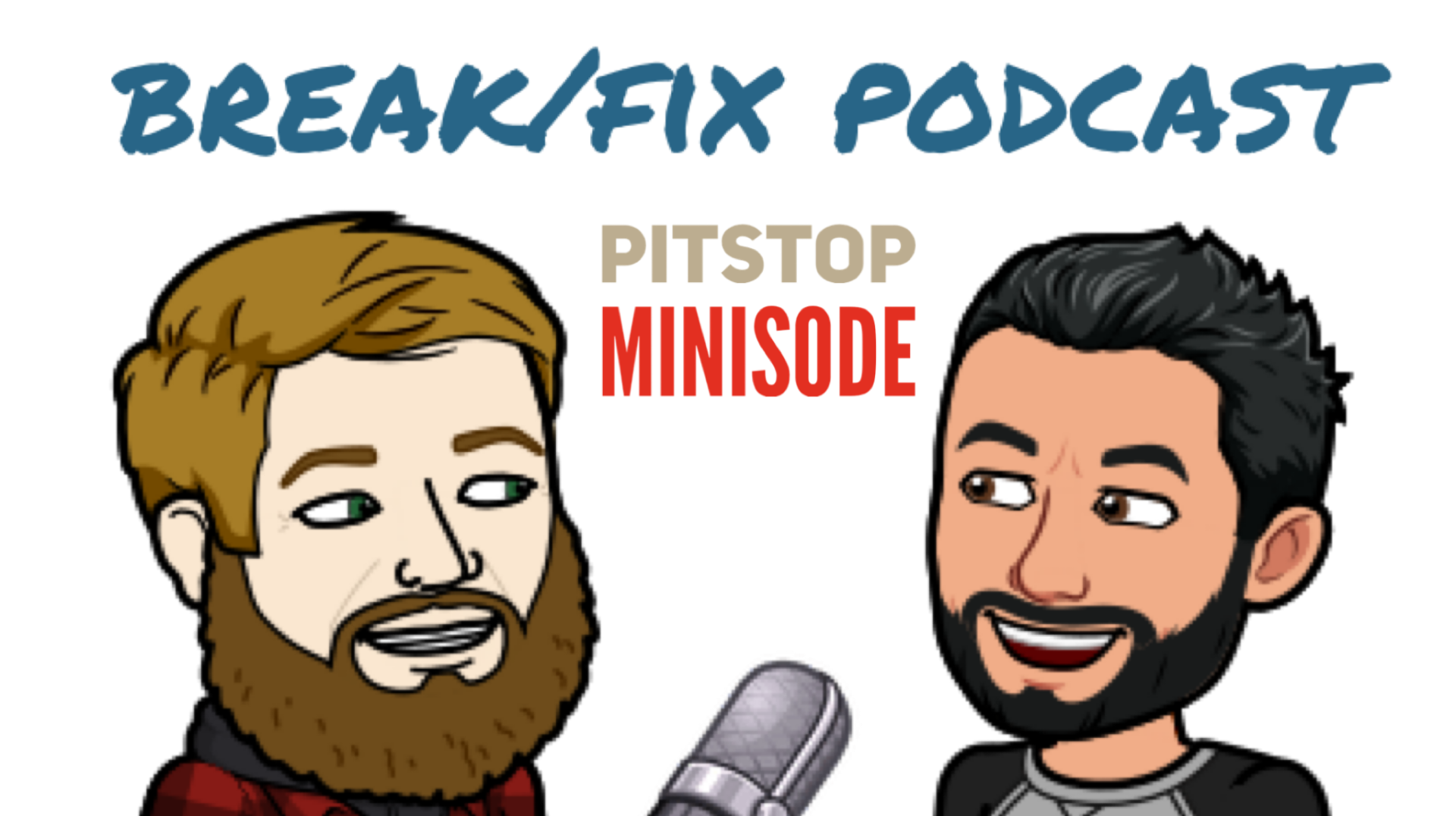 Bonus content available as a #PITSTOP mini-sode.
Bonus content available as a #PITSTOP mini-sode.Consider becoming a GTM Patreon Supporter and get behind the scenes content and schwag!
Do you like what you've seen, heard and read? - Don't forget, GTM is fueled by volunteers and remains a no-annual-fee organization, but we still need help to pay to keep the lights on... For as little as $2.50/month you can help us keep the momentum going so we can continue to record, write, edit and broadcast your favorite content. Support GTM today! or make a One Time Donation.

If you enjoyed this episode, please go to Apple Podcasts and leave us a review. That would help us beat the algorithms and help spread the enthusiasm to others by way of Break/Fix and GTM. Subscribe to Break/Fix using your favorite Podcast App:
 |  |  |
AutoInterests’ motto is “Driving Perfection” which has two meanings to them. First, they strive to help their drivers achieve perfection in their skills. Admittedly, nobody is ever perfect, but we should always be striving for improvement and getting one step closer to “perfection”.
In addition to actual driving skills, AutoInterests is always striving for perfection in their operations. They want to be the driving force for improvements in the HPDE industry. Leading the way with improvements in operations based on feedback from their drivers through the use of technology has been key to their growth and success. AutoInterests goal is to never stop Driving Perfection to provide the best possible experience for their drivers!
Pit Stop! Toro! Toro! – The Ford Taurus Club?
In this post-session happy hour with Jason Kennedy of AutoInterests, we talk about – his start in the world of racing via the Ford Taurus Club, and all things Blue Oval, including his thoughts on the Mach-E, Best/Worst Mustang?, Ecoboost, V6 or V8?, sexiest Ford of all time? – and more! Sit back and Enjoy!
Some stories are just too good for the main episode… Check out this Behind the Scenes Pit Stop Minisode! Available exclusively on our Patreon.
This content has been brought to you in-part by sponsorship through...
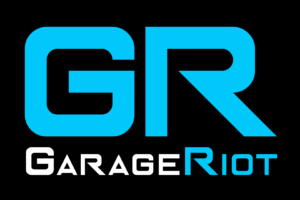 | 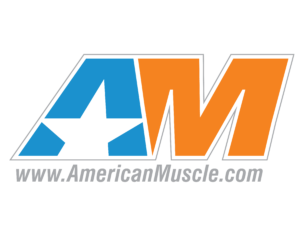 | 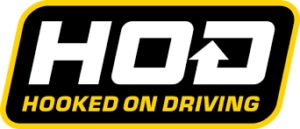 |  |


